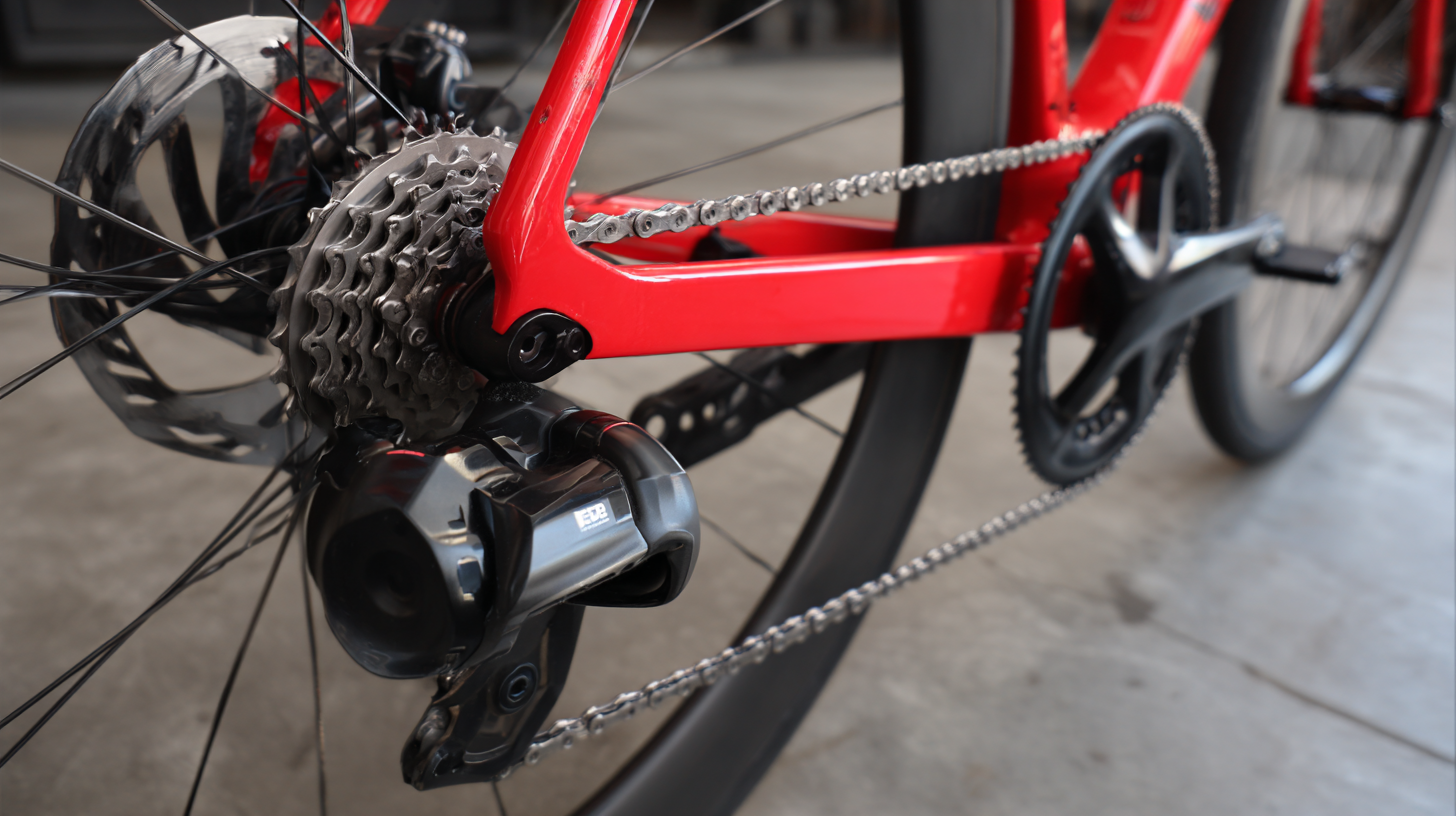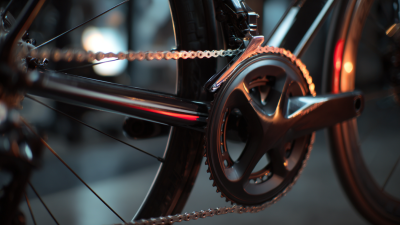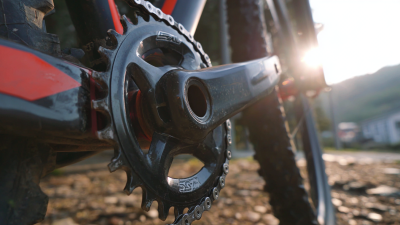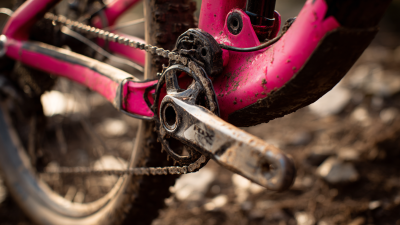What is a Wheels Bottom Bracket and How to Choose the Right One for Your Bike
The wheels bottom bracket is a crucial component of any bike, directly affecting performance, stability, and rider comfort. As cyclists increasingly seek greater efficiency and enhanced ride quality, understanding how to select the right wheels bottom bracket has become essential. According to industry data, the global bicycle components market is projected to reach $2.5 billion by 2025, driven by demand for high-performance parts. The bottom bracket, acting as the interface between the bike frame and crankset, plays a vital role in power transfer and overall bike dynamics.
Choosing the correct wheels bottom bracket involves considering factors such as compatibility with your frame and crankset, shell width, and the type of riding you intend to do. Recent studies highlight that the right bottom bracket can improve pedaling efficiency by up to 15%, showcasing its importance in optimizing bike performance. With advancements in technology, various materials and designs are available, offering a range of options to suit different riding styles and preferences. As cyclists strive to maximize their potential, investing time in understanding and selecting the appropriate wheels bottom bracket is more important than ever.

Understanding the Functionality of a Wheel's Bottom Bracket
The bottom bracket is a crucial component that connects the bike frame to the cranks, allowing for smooth rotation and efficient power transfer. It serves as the pivot point for pedal movement, a function that greatly influences overall bike performance. Recent industry reports indicate that up to 20% of a cyclist's efficiency can be lost due to improper bottom bracket selection or installation. Understanding the various types of bottom brackets, including threaded, press-fit, and internal designs, is essential for optimizing your bike's performance.
When choosing the right bottom bracket, one must consider compatibility with the bike’s frame and crankset. For example, a report by the Cycling Research Institute highlights that mismatched bottom brackets can lead to increased wear and tear, reducing the lifespan of both the crankset and frame by up to 30%. Furthermore, selecting the appropriate material—be it aluminum or plastic—can also impact weight and durability. With advancements in technology, newer models offer enhanced sealing to guard against dirt and moisture, which has been shown to increase longevity by as much as 40% compared to older designs.

Different Types of Bottom Brackets and Their Compatibility
When selecting a bottom bracket for your bike, understanding the different types and their compatibility is crucial. Bottom brackets come primarily in three forms: threaded, press-fit, and internal. According to the Cycling Industry 2023 report, over 70% of modern road and mountain bikes utilize press-fit systems due to their lightweight properties and enhanced stiffness, which are essential for performance cycling. Threaded bottom brackets, while less common in new models, still hold a significant share among older bikes and are favored for their ease of installation and maintenance.
Compatibility is another vital consideration. The standard widths for bottom brackets can range from 68mm to 92mm, with various shell standards such as BSA, BB30, and PF30 present in the marketplace. A recent study by Bike Magazine indicates that mismatched components account for nearly 15% of common bike maintenance issues. Therefore, it's essential to ensure that your chosen bottom bracket is compatible with both your bike frame and crankset to optimize performance and durability. Always consult manufacturer specifications to confirm that the options you are considering align perfectly with your biking needs.

Key Factors to Consider When Choosing a Bottom Bracket
When choosing a bottom bracket for your bike, several key factors must be considered. First, the type of riding you engage in and your specific bike's compatibility are crucial. For instance, if you frequently ride in harsh conditions, opting for a bottom bracket known for durability and resistance to debris can enhance your riding experience. Some brands now offer versions with advanced sealing techniques that considerably improve protection against water and dirt, which can lead to a longer lifespan and smoother operation.
Another important consideration is the material and bearing type of the bottom bracket. Advanced options feature ceramic or stainless steel bearings that provide reduced friction and increased longevity compared to traditional materials. Additionally, the variety of standards available, such as external and internal thread designs, can significantly impact the ease of installation and overall performance. Ensuring you select the right size and fit for your cranks will help maintain optimal efficiency on your rides.
What is a Wheels Bottom Bracket and How to Choose the Right One for Your Bike
| Type | Shell Width (mm) | Spindle Diameter (mm) | Weight (g) | Material |
|---|---|---|---|---|
| BSA | 68 | 24 | 150 | Aluminum |
| BB30 | 68 | 30 | 120 | Carbon |
| PF30 | 68 | 30 | 130 | Plastic |
| ITA | 70 | 24 | 160 | Steel |
| Square Taper | 68 | 22 | 200 | Aluminum |
How to Properly Install and Maintain Your Bottom Bracket
Proper installation and maintenance of a bottom bracket are crucial for optimal bike performance and longevity. According to a report by the Bicycle Retailer & Industry News, a well-installed bottom bracket can enhance power transfer efficiency by approximately 10%, significantly impacting your ride quality. To install a bottom bracket, begin by ensuring you have the correct tools, such as a bottom bracket tool specific to your bike's type. Clean the frame's bottom bracket shell thoroughly to remove dirt and debris before inserting the new bottom bracket, taking care to follow the manufacturer's specifications for torque and threading.
Maintaining your bottom bracket involves regular checks for play or noise, which can indicate wear or misalignment. The International Cycling Union recommends inspecting your bottom bracket at least twice a year or more frequently if you ride in wet conditions. Keeping the threads clean and applying a suitable grease can significantly prolong the lifespan of the bottom bracket, with some high-end models lasting over 5,000 miles with proper care. Regularly checking for signs of deterioration or unusual sounds will help ensure your bike remains in prime condition, allowing for a smoother and more efficient ride.
Common Mistakes to Avoid When Selecting a Bottom Bracket for Your Bike
When selecting a bottom bracket for your bike, avoiding common mistakes is crucial for optimal performance and longevity. One frequent error riders make is not considering the compatibility of the bottom bracket with their bike frame and crankset. According to a study by the Bicycle Manufacturing Association, over 30% of riders end up with a bottom bracket that does not fit their specifications. It's essential to check the threading types—like BSA, Italian, or Press-Fit—before making a purchase to ensure compatibility.
Another common pitfall is neglecting to consider the material and bearings used in the bottom bracket. High-quality materials, such as aluminum or ceramic bearings, not only enhance durability but also improve pedaling efficiency. Research from Cycling Weekly indicates that bottom brackets with ceramic bearings can reduce friction by up to 50%, leading to smoother rides and increased performance. Therefore, assessing both material quality and manufacturer recommendations is vital to avoid investing in a product that fails to meet expectations. Understanding these key factors will guide you toward choosing the right bottom bracket for your bike.
Related Posts
-

Ultimate Guide to Choosing the Right Enduro Bottom Bracket for Your Bike Maintenance
-

Unlocking Performance: The Impact of 24mm Bottom Bracket on Cycling Efficiency and Speed
-

Unlocking Performance: The Ultimate Guide to BSA 68mm Bottom Brackets for Cycling Enthusiasts
-

Exploring the Advantages of Upgrading to the Latest Cartridge Bottom Bracket Technology
-

Unlocking the Benefits of a 19mm Bottom Bracket: Enhance Your Cycling Performance Today!
-

The Ultimate Guide to Choosing the Right Bottom Bracket for Your Bike
This website uses cookies to ensure you get the best experience possible. Learn more.